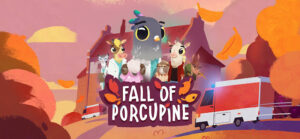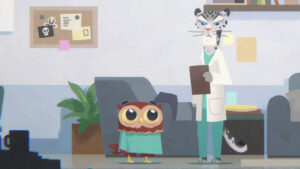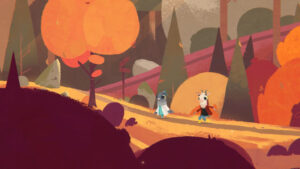You are Finley, an anthropomorphized bird. You recently relocated to Porcupine, a small town where everybody knows everyone. As a junior doctor, you’ve only recently begun working at the community hospital, and already things are getting a little out of hand. Along with trying to maintain some semblance of a social life outside of your demanding hospital shifts and meeting your boss’ expectations, you also make an effort to get to know the other people in the community. However, the career you’ve chosen starts to wear on you, and before long, everything will go to shit. Although the story didn’t need to go through so many hoops to get there, it does honor the sacrifices made by medical professionals during the pandemic and still make today.
The book starts with a dream sequence that Finley experiences as he is getting better from a head injury he sustained while trying to find a patient who ended up in a vacant ward. The question of whether the incident was truly an accident or whether, as he believed, someone else had been up there with him and the patient hangs over the game as the mystery of how the wound occurred. I almost felt let down when I realized that the reality wasn’t nearly as evil or even supernatural as my wild imagination had me believe.
This is a part of the Fall of the Porcupine’s overall tonal inconsistency. Apart from the talking animals, the majority of this fairly commonplace adventure game is simple and even close to real. You stroll through the town, engage in conversation, meet new people, and then go to work. Finley does, however, occasionally have lengthy discussions with statues in which he presents both sides. He enters a forest at one point and engages in some light-weight platforming using floating rock platforms, a diversion from what is otherwise a very grounded game. Despite the fact that the game’s tone doesn’t change drastically enough to feel constant, the character has nightmares in which bad things happen.
The game play itself is satisfactory. All of Finley’s tasks, such as diagnosing, administering shots, adjusting bandages, and examining patients, are carried out through minigames that become more difficult as the game progresses, which I found to be fun to pretend to be a doctor. However, the difficulty wasn’t always consistent, and some of the minigames were poorly explained, leaving me to fumble around trying to figure out what to do. Still, they made their point: the transition from medical school to working on a ward is a big one, and one that can leave inexperienced doctors feeling significantly out of their depth.
I struggled more and more as the games grew more difficult. It’s unfortunate that there are so many bugs that undermine this innovative idea. Characters who were obviously supposed to be on-screen but were not present found me having conversations with them. I experienced a few crashes as well. Sometimes I would be in the middle of a conversation and would discover that I couldn’t move forward unless I reloaded a save.
When I was with my virtual friends, they would occasionally vanish as we moved from one location to another, but people would still address me and talk to me as if I were with them. On-screen speech bubbles occasionally didn’t fit. There have been times when a character has quickly transitioned between what I can tell are two distinct conversational strands. And on it goes. A large portion of my experience was saved by the stunning visuals, which strongly reminded me of Night in the Woods, and the endearing cast of individuals Finley gets to know while attending Porcupine.
Every day I enjoyed taking the same route to work, chatting with the proprietor of the neighborhood pub, checking in with the woman who fished by the sewer, and stopping by the flower shop to see how my friend the florist was doing. I enjoyed running into patients on the street and observing how far they had come. Every character had a distinct personality and had a life of their own, and helping them out in between shifts gave the experience color and made it enjoyable rather than merely tolerable. However, there is only so much that can be done to improve a game that is so riddled with glitches and inconsistencies.







